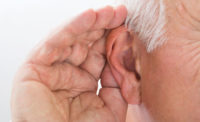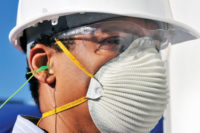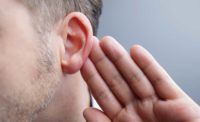Hearing loss is devastating to quality of life

Hazardous noise sources are numerous. Manufacturing equipment, motor vehicles, heavy construction equipment, power tools, hand tools, aircraft noise, weapons, and even lawn maintenance equipment, to name a few. Exposure to excessive noise over an extended period of time will result in hearing loss. There are also some situations where hearing loss may occur very rapidly.
How can you prevent hearing loss?
You must first recognize that a noise problem exists, evaluate the extent of the potential problem and then control it.
Identifying & quantifying noise
You must be able to determine how much noise is in the workplace in a quantifiable manner. Measurements can be done using various sound measuring devices including sound level meters, dosimeters and octave band analyzers.
A sound level meter can be used to get an overview of the noise created by each activity that an employee performs or give an overall noise level in a particular area.
A noise dosimeter continuously measures the sound levels to which an employee is exposed throughout the day using a microphone which is positioned near the ear. It provides an 8-hour time weighted average (TWA).
An octave band analyzer may be used when there are very predominant frequencies of noise, but often it is not necessary to use such a device unless an acoustics professional is trying to develop a strategy to engineer the noise out.
Any of these measurements should be performed by a qualified health and safety professional such as a Certified Industrial Hygienist or Certified Safety Professional.
Engineering & administrative controls
OSHA and accepted practice dictates that, whenever feasible, controls be accomplished through engineering and administrative methods before the use of hearing protection devices. Engineering controls might include quieter manufacturing methods, properly maintaining equipment, eliminating a noise source completely, building enclosures, or the use of sound damping technology.
Administrative controls might include automating a process to remove or limit the time that an employee must work in a particular area, changing operating schedules such as using noisy equipment on shifts when there are fewer employees, and rotating employees out of noisy areas.
In accordance with OSHA 1910.95, when noise exposures are greater than 90dBA as an 8-hour TWA and engineering and administrative controls have not reduced the overall exposure adequately, then hearing protective devices are required.
Plus, when exposures exceed 85dBA as an 8-hour TWA, the employer must implement a comprehensive Hearing Conservation Program. This includes defining when the program is to be implemented and for which employees, periodic noise monitoring, employee notifications, allowing employees to observe the noise monitoring, audiometric testing, training and record keeping.
Engineering controls can be expensive over the short term, yet they may be the most economical method over the long term since once the problem is engineered out, further investments will be minimal.
Administrative controls require very formal procedures, must be comprehensive, and require that management and employees comply with the procedures implemented. Unfortunately, administrative controls can be easily nullified if a production schedule changes and must be run on other shifts, or an employee who normally rotates into an area is not available to relieve
the other employee in the noisy area.
Finally, a Hearing Conservation Program requires continuous investment and time, which over a long term can amount to considerable and recurring expense.
All costs associated with the hearing conservation program must be borne by the employer.
Hearing protection devices
Assuming that not all the noise sources can be engineered out or exposures reduced through administrative controls, hearing protection devices must be considered. The types of devices to offer the employee must be determined by the employer. OSHA requires that when a Hearing Conservation Program is implemented, that “Employees shall be given the opportunity to select their hearing protectors from a variety of suitable hearing protectors provided by the employer.”
Hearing protection devices include earplugs, earmuffs, semi-aural bands and electronic devices. Hearing protectors used in the workplace must have a Noise Reduction Rating (NRR) in accordance with testing set forth by the Environmental Protection Agency (EPA).
NRR is a rating assigned to each device which indicates how much noise attenuation the wearer might be expected to achieve under optimal conditions.
Choosing the right hearing protector requires careful consideration of several elements. At sites where low frequency noise predominates, earmuffs can be very helpful. Semi-aural bands or earmuffs are useful in situations where someone periodically goes in and out of noisy environments.
Sites can be very dirty and therefore employees may want a product that is easy to maintain. Earplugs are very useful in these types of situations although one must be careful that dirty hands do not contaminate the device.
Another important factor is how the hearing protector interacts with other personal protective equipment such as hard hats, eye protection and welding hoods. For instance, eye protection may interfere with the use of earmuffs.
Compliance is critical
Employee compliance with the employer’s Hearing Conservation Program is critical. When employees understand what the consequences of losing their hearing can be, it is more likely that they will comply with the hearing conservation requirements.
There are excellent training tools available including videos that demonstrate how one’s hearing works and the devastating effects of loss of hearing. Not being able to hear your friends and family, the television, the radio, and the sounds of nature are losses that no one should have to experience as a result of not being protected from excessive noise in their work environment.
Looking for a reprint of this article?
From high-res PDFs to custom plaques, order your copy today!





